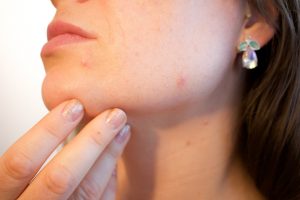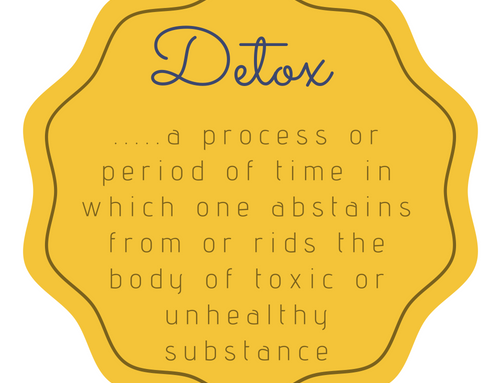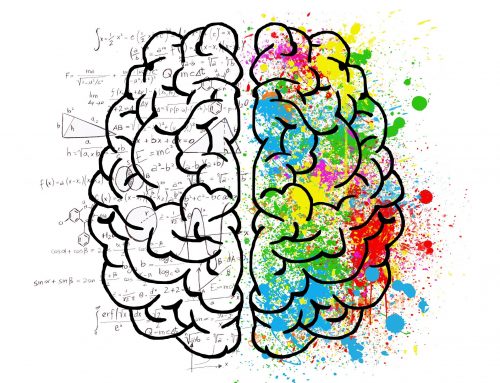The Connection Between Gut Issues & Estrogen Dominance

In females, estrogen dominance occurs when progesterone levels are lower than estrogen levels.
Symptoms of high overall estrogen include :
- PMS symptoms
- irregular periods
- fluid retention in your breasts/ breast tenderness ,
- weight gain
- headaches
- brain fog
- mood swings
- depression
- weepy and emotional
- irritable
- low libido
- sugar cravings
- sleep disturbances
- histamine issues,
- uterine fibroids
- endometriosis
- thyroid problems
- gallbladder problems
- blood sugar issues.
That’s a whole host of symptoms that you have with estrogen dominance!
So let’s get into some of the links between the food we eat and gut health, and how this can impact estrogen dominance!
Connection #1: Consuming Phytoestrogenic Foods
Say what? Phytoestrogenic foods are foods that are basically estrogen mimicking. They are not stored in fat tissues like synthetic estrogens, but they can result in raising overall estrogen and remembers, when estrogen becomes higher than progesterone, estrogen dominance occurs Phytoestrogens are found in soy based foods , including tofu, which are all the rage right now, especially among vegetarian and vegans. What happens is that these soy-based foods will actually lead to an increase in estrogen in the body and exaggerate the imbalance between estrogen and progesterone. Interestingly, this issue does seem to be correlated with the consumption of traditional amounts of organic soy fermented foods like tempeh. So if you’re going to go with the soy based food, you need to go within healthier form of the soy based food.
Connection #2: Eating a Low Fibre Diet
How does a low fibre diet contribute to estrogen dominance? Because we need enough soluble fiber to bind to bile. The bile serves to escort estrogen hormones out of the body. If you have this buildup of estrogen and estrogen can’t get out of your body, then guess what? You’re going to have estrogen dominance. This is why it’s important to sure that you’re eating a diet that’s high in soluble fiber.
Healthy examples of soluable fibre include:
- avocados
- brussel sporuts
- sweet potatoes
- broccoli
- turnup
- pears
- figs
- carrots
- aprictos
- flax seeds
- sunflower seeds
.
Connection #3: Poor Dietary Choices
There are several dietary choices that can directly impact estrogen levels. What’s interesting is coffee is actually known to raise estrogen. Women who stopped drinking coffee have discovered that they have a reduction in anxiety and mood swings and painful menstrual cramps, fibrocystic breasts and hot flashes and insomnia. So, if you think you are estrogen dominant, time to cut that coffee out!
Like coffee, alcohol also increases estrogen. That’s why many post-menopausal women feel better drinking some wine, because they are actually self-medicating because it’s increasing that estrogen
Unrefined sugar, actually depletes the blood of magnesium and magnesium is a really important to address inflammation, to manage stress, and will, upregulate the aromatization (transformation) of testosterone into estrogen.
Connection #4: Nutrient Deficiencies
Nutrient deficiencies can be a result of diet. However, even if you are eating very heathy, nutrient deficiency can still be an issue. That is because if your gut isn’t able to absorb the nutrients you are consuming because of bacterial infections, because of mold issues, because of parasites, then you’re going to end up being nutrient deficient. Deficiency is B6 plays a key role in estrogen dominance. B6 actually helps the body to get rid of estrogen metabolites. Vitamin E helps with estrogen detoxification as well. Iodine is another big one. Generally speaking, we simply do not get enough iodine in our food. If your body is deficient in iodine, it can actually correlated with an increase in your estrogen levels. Low levels of iodine are commonly correlated with fibrocystic breasts, fibroid and endometriosis, all symptoms of estrogen dominants. So, you need to address iodine deficiency to address our estrogen levels.
Connection #5: High Levels of Beta Glucuronidase
Stay with me here. The body escorts estrogen out of the body by binding it to something called gluconic acid. If you have bacterial imbalances in your body, which means that your good bacteria is out of balance with harmful bacteria, then what’s going to happen is that this negative bacteria is going to produce an enzyme called beta glucuronidase. The beta glucuronidase will actually break up the bond between the estrogen and the glucuronic acid. Which means that the estrogen won’t be able to leave the body, and it will continue to recirculate.
Connection #5: Poor Bile Production
Once the liver has broken down your estrogens into metabolites, they are released into the bile, to be escorted out of your body through your stool. However, if you have gut bugs, or a significant amount of toxins, it’s going to impact your ability to produce healthy bile. Like insufficient fibre, insufficient bile means that the estrogen is going to be recirculating in your body.
We have discussed some very important connections between what you are eating and gut health and how these factors impact estrogen levels. This is why, if you are struggling with estrogen dominance or other hormonal issues, it is important to focus on gut health first – because addressing what you’re eating, sorting out how you’re absorbing, and eliminating and unwanted gut guests is indirectly going to be impacting all of your hormone levels, including high levels of estrogen.
For more information on how to join my gut instinct program, to run a DUTCH test and figure out what your hormone levels are, or to find out what’s living inside of your gut, click the link below for a free discovery call.







